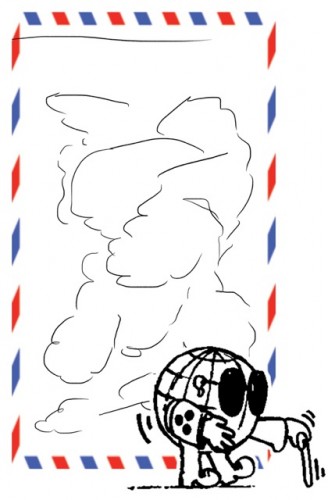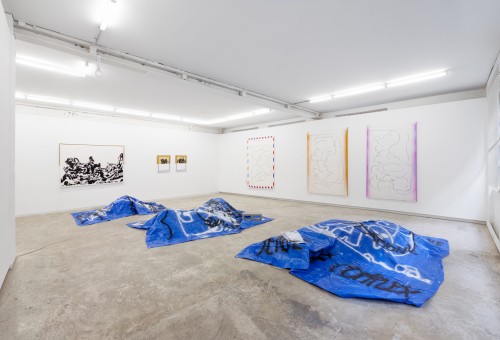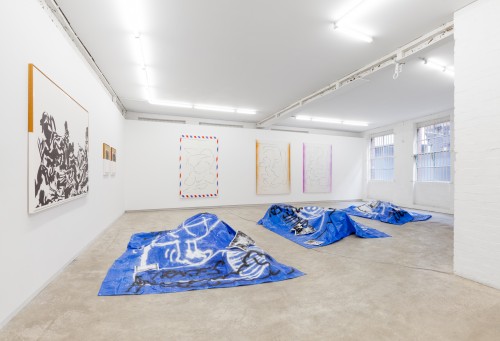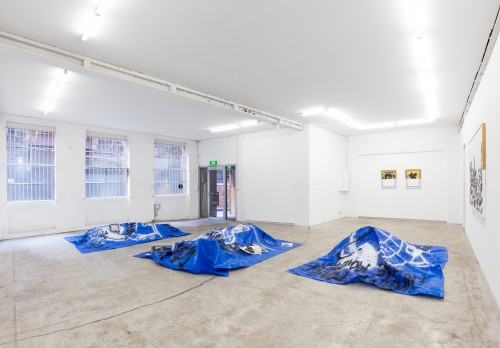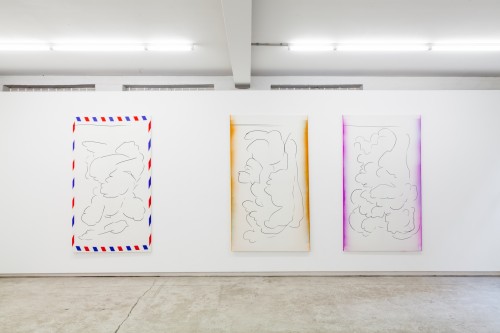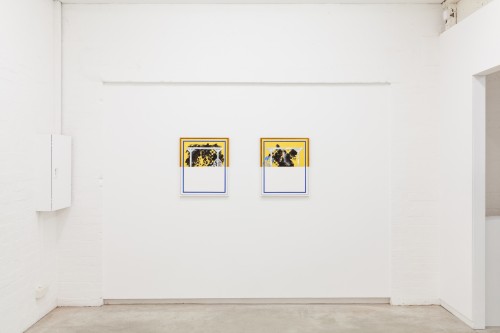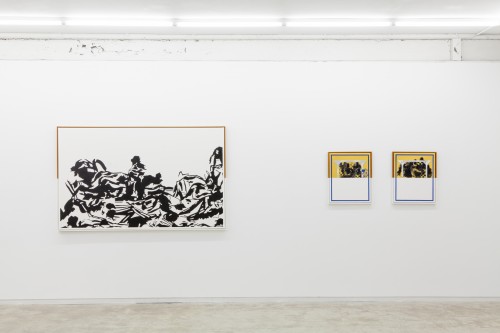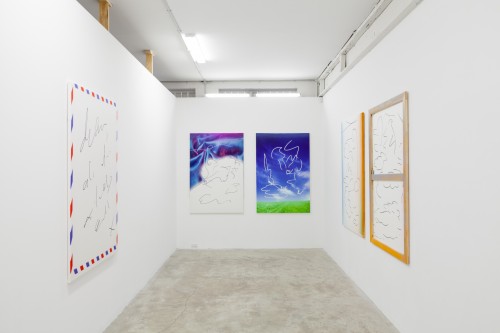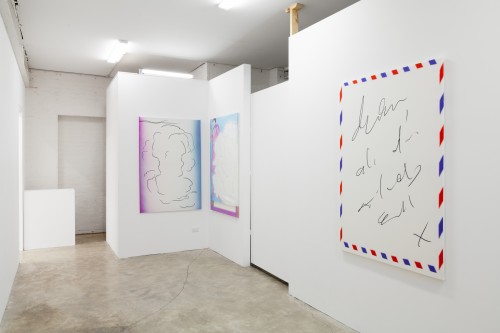PATH
Children are now born into a world where typing takes precedence over cursive writing. Unwittingly the centre of this shift is gestural. At some point perhaps it will be artists who refuse to type. In 1922 Captain Cyril Turner of the RAF dropped oil on his aeroplane’s exhaust pipe and wrote letters in the sky over Times Square in New York City at approximately 10,000 feet. In the late 1960’s artists James Turrell, Sam Francis and Marinus Boezem started to employ skywriting as a medium. As seen in the work of Georgia O’Keefe, Lee Krasner and Joan Mitchell, 20th Century art is characterised most strongly by approaches to the painted gesture. But now in a time where gesture is no longer a daily activity (entering PIN codes in place of signing one’s name for example) perhaps the value of this activity is increased. In this century already so dominated by the use of a keyboard to communicate with others, the advocacy in art for the hand remains staunch. Yet the parameters for this type of movement are in a new set of circumstances.
OPPORTUNITY
The freedoms of the air are a set of commercial aviation rights granting privilege for countries to enter and land in another’s airspace. The sky, a place once of gods, and now freight, is tenuously shared. When we look up we do so as Romantic painters did, as terrified passengers now may, or as children who see figures emerge from brushstrokes. Everyone can see the sky at once but the cloud has been arrested both as a metaphor for data and environmental change. Artists, tourists, delegates and expensive abstract paintings are flown in jets to various locations across the earth in search of admirers. Their messages are written in opportunity, beginning to disperse as vapour before completion. Form is witnessed in the moment of its passing, but in memory it may remain. To fix the movement of bodies on jets or on the dance floor, as in nature morte, is to freeze the reflection. In strokes that are imperfect, those who seek to counter these gaps do so in holding on to something otherwise changed.
Ry David Bradley completed his MFA at the Victorian College of the Arts in 2013. Recent exhibitions includeTabularium, curated by Alana Kushnir, Slopes, Melbourne, 2014; <3, Nellie Castan Gallery, Melbourne, 2013; The Lies of Light, Monash University MADA Gallery, Melbourne, 2013; School of Global Art, West Space, Melbourne 2012; BYOB, Tristian Koenig Gallery, Melbourne, 2011; and Lighthouse Annual Art Auction, Australian Centre for Contemporary Art, 2010. Bradley was winner of the John and Mary Kerley Studio Research Scholarship for International Exchange, 2013; The Athenaeum Club Award, VCA Graduate Exhibition, 2012; and The Myer Family Foundation Award, 2012. In 2012 he received an Australian Postgraduate Award Scholarship from The University of Melbourne and Australia Council funding to undertake a mentorship in New York. He has forthcoming exhibitions in Sydney, Berlin and Naples in 2015. In 2009 Bradley founded the popular global network Painted, Etc.
Thomas Jeppe graduated with a BA in Cultural Studies (Honours), The University of Melbourne, 2005; and a Master of Visual Art, Victorian College of the Arts, 2011. Recent solo and two-person exhibitions include Chateau Plais, The Duck, Berlin, 2014; Compass Trouble, Curro & Poncho, Guadalajara Mexico, 2014; Abstract Journalism, 032c Workshop, Berlin, 2014; Driving Fast Nowhere, Polansky Gallery, Prague, 2013; Seaside Vernacular, Utopian Slumps, Melbourne, 2013; EP, Austin, Texas, 2013; Asiatische Adlernase, Conradi, Hamburg, 2012; and Cirrhosis By The Sea, Family Gallery, Los Angeles, 2010. Selected group exhibitions include Primavera, curated by Robert Cook, Museum of Contemporary Art, Sydney, 2013; REMIX, Art Gallery of Western Australia, Perth, 2011; INDEX, Hamburg Kunsthaus, Hamburg, 2010; and The Corridor to Success, The Composing Rooms, London, 2010. In 2015 Jeppe will hold his first institutional solo exhibition at Sazmanab Centre for Contemporary Art in Teheran, Iran.
